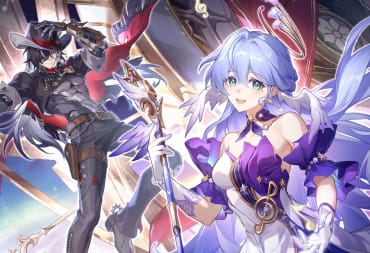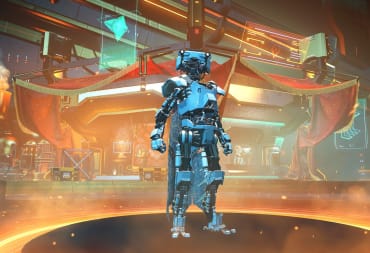Plenty of games launch a little rough-around-the-edges. We could probably all list dozens upon dozens of games that launch riddled with bugs, graphical glitches, scripting issues, or horrifying demon faces from hell, but complete overhauls are a very different thing. In the age of online gaming, "living games" that evolve and grow over time are becoming the norm. Many games launch as one thing and, two years down the line, are almost unrecognizable as the same game.
It shouldn't be a surprise then that there are so many prevalent examples of games that were not exactly what the fans wanted for one reason or another upon their first release but have since evolved into thriving communities.
Final Fantasy 14
Remember when Final Fantasy 14 wasn't hugely popular and beloved? No, I barely do either. It seems hard to believe that one of the most-played online games originally launched in such a sorry state, rejected by critics and fans alike. In 2010, after prolonged alpha and beta testing, the original release of Final Fantasy 14 went live. It was universally panned, with critics and fans criticizing the game's poor UI, sloppy combat, overly-grindy content, and general lack of polish.Final Fantasy 11 proved that not only could a Final Fantasy MMO work, but it could actually be really good. The success and cult status of that game only further highlighted Final Fantasy 14's failures. Two years later, a reworked and revamped game was released under the moniker Final Fantasy 14: A Realm Reborn. It was more polished, more refined, and generally what fans and critics had wanted from the original release. It wasn't perfect, but it was a much better starting point.
Four years and several major content patches and expansions later, the game is one of the most popular active MMOs. It has a thriving and dedicated community spread across PS4 and PC, and I'm sure it has a good future ahead of it. It was a remarkable turnaround and an even more remarkable restoration of fan's trust and confidence.
Square Enix was able to go from making an MMO that was a complete failure to rebooting it into a great success. They did such a good job that people hardly ever talk about what a colossal failure it was the first time. That's pretty special.

No Man's Sky
The nightmarish debacle that surrounded No Man's Sky is probably fresh in most people's minds. Disappointment about a highly-anticipated game quickly turned into vitriol and abuse, resulting in the developers receiving death threats and going into radio silence for months.As shocking and unnecessary as this reaction was, the game labeled as "the last game you'll ever need to play" was kind of doomed to fail. Nothing could live up to that kind of hype. The promise of an infinitely procedural and expanding universe that could remain exciting and surprising was just too good to be true. Exploration of planets that would consistently be unique, bizarre, and truly alien didn't quite turn out the way people wanted. The planets weren't consistently any of those things, and the final product was ultimately empty and boring.
Almost two years after its initial release, No Man's Sky has been revamped and effectively rebooted as No Man's Sky Next. It wasn't an expansion or any sort of DLC, it was just a great big patch. A great big bandaid the developer's stamped on their game to address many of the issues people had with it. It may not be perfect, but it's a vast improvement on the original game.
With help from the various additions and improvements that have been steadily patched into the game over the last two years, No Man's Sky is now a much more focused game and feature-rich. There are now neat base-building mechanics, a whole new story campaign, more direction given on what to do and where to go, and plenty of new things to see and places to go. No Man's Sky Next is a marked improvement on the original product, and it's an impressive turnaround of a PR disaster.

Fortnite
Fortnite may be the biggest game on the planet, but even the biggest games struggle. Fortnite's troubles started with its development, but things didn't really start going well until the Battle Royale mode was added in late 2017. The game was in a form of development hell for years. It was supposed to be the first game to use Unreal Engine 4 but missed it by a mile - 2014 horror game Daylight ended up taking that spot instead.There were a number of reasons the development ended up being so elongated. A complete overhaul of the game's art style, which started out dark and gritty before becoming the vibrant and cartoonish style it's now known for, and a shift of game engines from Unreal 3 to Unreal 4 were a couple of major ones. After a while, people began to wonder if Fortnite was even still in development and we were starting to hear less and less about it as the years went on.
When Fortnite finally did release in Early Access in 2017 as Fortnite: Save The World, it received a pretty mixed reception. Its presentation was praised and there were some novel ideas, but the overall game received rather tepid reactions. The game certainly wasn't bad but its long-term impact was pretty questionable. Without the addition of the incredibly popular Battle Royale mode, Fortnite would have probably slowly faded from people's minds.
When Fortnite Battle Royale did launch in late 2017, it didn't take long to set the world on fire. It became so huge that it even consumed other Epic games. Paragon, a third-person action take on the MOBA genre, became more of a priority during development when Fortnite was struggling. It was clear that Epic had more faith in Paragon to be their next big online game. In January 2018, Epic announced that Paragon wasn't meeting expectation and was being shut down.
Clearly, this was in part due to the massive success of Fortnite Battle Royale, which was surprising everyone by rapidly becoming more popular than its primary competitor PlayerUnknown's Battlegrounds. Fortnite Battle Royale not only turned Fortnite into the most popular online game in the world (possibly ever), but it also rescued it from an becoming irrelevant obscurity that time forgot. This game is a bit of an anomaly on this list. This wasn't just an update that fixed something or added some new stuff, it completely changed the genre of the game and turned into something wholly new. Whoever came up that idea deserves a raise. A big one.

Diablo III
Making a sequel to one of the most adored PC games of all time is quite the task. There was a huge wave of anticipation surrounding Blizzard's follow-up to the legendary hack-'n'-slash loot RPG. Unfortunately, Diablo III struggled to live up to this hype in its early days. In fact, it took them a while to really get it right. It was only after the release of the game's first expansion Reaper of Souls in 2014 that the game would start to deliver on its promise.Although it was well-received by critics upon release, there were a number of issues that fans had with the game's longevity and its end-game content, which were two essential factors of Diablo II's success. The game simply didn't offer enough for players to do once they reached max level. The original structure of the game made getting to level 60 be the end-game, instead of being a precursor to it. This totally killed the momentum of a game that should have been an online-focused and highly replayable experience. There was also the seemingly simple issue of there not being enough loot.
It may seem impossible for a game where the sole objective is to kill things in order to get better loot so you can kill harder things and get even better loot, but it was somehow the case. Loot was simply not plentiful enough, and high-quality loot was even harder to come by. Rare loot in these kinds of games shouldn't be common - that would defeat the point of them being rare - but they need to be common enough to keep you hooked. When you can play for hours on end and not get rewarded with anything it can be pretty hard to stay motivated. Fixing this key issue was a big part of making Diablo III actually fun. Something Blizzard seemed to have forgotten about up until that point. There was more to Diablo III's problems than scarce loot, however.
The Real-Money Auction House represented a more fundamental flaw in Diablo III's initial design. When the game launched, it featured an Auction House that allowed players to trade items and gear for gold or, as the name suggests, real money. Now, since Blizzard was undoubtedly taking a cut of every sale made it would be easy to take the cynical approach and suggest that they made the loot scarce to make money off player's buying loot, but I'm not going to take this approach.
Instead, I want to focus on how the Auction House shifted the balance of the game away from finding loot and toward buying it. The "meta" of the game became more about making the most out of the Auction House than anything else. I must have spent more time staring at the Auction House and making trades than playing the actual game during this period. The Auction House was an interesting idea at best, and a game-breaking disaster at worst. Doing away with this was a key part of fixing what was wrong with Diablo III.
In its current state, Diablo III is a more focused, more rewarding, and just straight-up more fun game. The variety of versions, including the recently announced Switch version, offer more ways to play and open it up to a wider audience. It finally resembles the game that fans wanted the sequel to Diablo II to be and, frankly, I'm looking forward to seeing what they do with Diablo IV.

Slain
When Slain was first announced in 2016, the gorgeous 16-bit Castlevania inspired indie game drew a lot of attention based on its visuals alone. It looked incredible in motion. I mean, just look at how sweet this gif looks. Sadly, when the game eventually launched it was a huge disappointment. The game looked as great as the original trailer promised, but it played pretty horribly and was filled with cheap and frustrating deaths. After receiving a Metacritic score of 40% (on PC), the developers decided the game needed a rigorous re-design and they got to work on delivering on the game's potential.
Sadly, when the game eventually launched it was a huge disappointment. The game looked as great as the original trailer promised, but it played pretty horribly and was filled with cheap and frustrating deaths. After receiving a Metacritic score of 40% (on PC), the developers decided the game needed a rigorous re-design and they got to work on delivering on the game's potential.
Fans were greatly relieved when Slain was swiftly rebooted as Slain: Back From Hell. The reboot reworked vast portions of the game and fixed many of its problems, addressing issues of the game's "feel" and many, many other things. The big list of changes shows just how much the developers fixed and altered. It wasn't perfect, but it was a great improvement.
Slain: Back From Hell finally delivered on the promise of that original trailer and is now a solid 2D platformer with Metroidvania elements.
Grand Theft Auto Online
Grand Theft Auto V was always guaranteed to be a hit. GTA has always been a popular and successful, never failing to draw attention and controversy whenever a new game rolls around. GTA V was something else, however. Its incredible success broke records, within the series and within the industry at large, becoming one of the fastest and best-selling games of all time. So naturally, people got very excited when Rockstar revealed that the latest game in the open world crime series would have a major online portion the scale of an MMO.GTA Online would eventually prove to be wildly successful and pretty awesome, but it wasn't always that way. The online part of GTA V launched two weeks after the base game did and was a complete mess. Connection problems, server struggles, people getting booted from servers again and again. It simply couldn't cope with the weight of millions of people trying to get in on the action all at the same time.
Server issues are one thing. Technical issues for a game this size and this popular are to be expected. GTA Online's issues were especially bad but these issues can be ironed out, and so they were. The more problematic issues came when people began to discover that this MMO-sized world had very little for players to do. The content drought in the early days of GTA Online became a real problem. It took some time but it got better. A lot better.
Rockstar eventually got around to incorporating the heists that made for some of the best moments in the single-player into the multiplayer portion of the game. They were a great success, offering the open-world carnage you want from a GTA game in a way that let you experience it with friends. Since the first heist, several have been released, as well as a wide variety of frequent and large updates. It's now a huge, sprawling game with plenty to do, from story missions to multiplayer PvP events like racing or team deathmatch. Rockstar managed to deliver on their promise of "GTA with friends". It took a while, and it was a bit of a rocky road, but they got there eventually.
GTA Online could have been a major flop. For the longest time, it seemed like it already was. It was popular and successful at launch but people weren't sticking with it. It took a while, but Rockstar eventually managed to deliver enough content that was fun, varied, and unique to keep players coming back for more. GTA Online is now one of the most popular and successful online games in the world and I'm sure we're all very curious about what Red Dead Redemption 2 will have in store.

Have a tip, or want to point out something we missed? Leave a Comment or e-mail us at tips@techraptor.net












